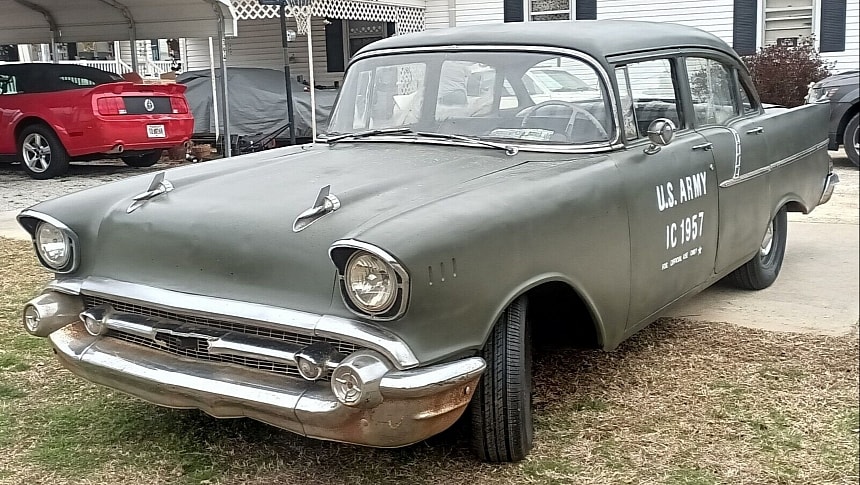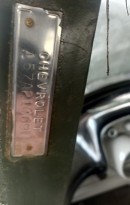The Tri-Five era Chevy Bel Air might legitimately be the most famous American automobile of the 20th century. So much so that when one imagines an image of 1950s Americana, the Bel Air is almost always in there somewhere. But not every second-generation Bel Air was built the same, not by a long shot. For every eye-catching, fully-loaded Bel Air the average snot-nosed rich kid drove in the late 50s, there were bare-bones examples built for things other than showing off.
Want proof? Look no further than this 1957 Bel Air 150 decked out in iconic US Army dark green. That's right, this 57 Tri-Five is a certified Army staff vehicle. As such, this is far from the most lavishly equipped Bel Air that has ever left an American factory. No more than a few thousand of these special government-issued Chevrolets were built for strictly non-civilian purposes. With this in mind, it makes sense why this 57 Bel Air is a bit more spartan than what you've come to expect from this, the model's most famous production year.
Absent is just about any semblance of luxury or creature comforts from a car that is popularly remembered as being flashy and well-equipped. No radio, no air conditioning, and the cheapest vinyl upholstery money could buy in those days account for the highlights of the features in this interior. It's to the point where what appears to be a bed sheet covering the rear seats looks infinitely more comfortable than the rags it feels like you're sitting on upfront. But besides the standard equipment list that begins and ends with a steering wheel, you also get a floor and trunk already in the process of being sacrificed to the rust gods.
So, it is not exactly the kind of place you want to spend a long period of time without a tetanus shot. But hey, what doesn't kill you makes you stronger, right? Whatever the case, the engine in this '57 Chevy Tri-Five also leaves a bit to be desired. No thumping great V8 lies under the hood of this Army staff car. Instead, it's rocking a 235-cubic inch (3.9 L) Blue Flame variation of GM's ubiquitous Stovebolt straight six produced in one form or another from the late 1920s all the way to the early 60s in North America and for even longer elsewhere.
You might call this motor puny, but the Army must've called it durable. Besides, it's not like you need to go all that fast when the longest distance you drive is from a set of Army barracks out to the front gate. Whatever the case, it's anyone's guess how many of these genuine pieces of US history are left in the world. With that in mind, a current bid of $5,200 doesn't seem all that unreasonable.
Absent is just about any semblance of luxury or creature comforts from a car that is popularly remembered as being flashy and well-equipped. No radio, no air conditioning, and the cheapest vinyl upholstery money could buy in those days account for the highlights of the features in this interior. It's to the point where what appears to be a bed sheet covering the rear seats looks infinitely more comfortable than the rags it feels like you're sitting on upfront. But besides the standard equipment list that begins and ends with a steering wheel, you also get a floor and trunk already in the process of being sacrificed to the rust gods.
So, it is not exactly the kind of place you want to spend a long period of time without a tetanus shot. But hey, what doesn't kill you makes you stronger, right? Whatever the case, the engine in this '57 Chevy Tri-Five also leaves a bit to be desired. No thumping great V8 lies under the hood of this Army staff car. Instead, it's rocking a 235-cubic inch (3.9 L) Blue Flame variation of GM's ubiquitous Stovebolt straight six produced in one form or another from the late 1920s all the way to the early 60s in North America and for even longer elsewhere.
You might call this motor puny, but the Army must've called it durable. Besides, it's not like you need to go all that fast when the longest distance you drive is from a set of Army barracks out to the front gate. Whatever the case, it's anyone's guess how many of these genuine pieces of US history are left in the world. With that in mind, a current bid of $5,200 doesn't seem all that unreasonable.




























